Plextor M5S 256GB Review
by Kristian Vättö on July 18, 2012 3:00 AM ESTRandom Read/Write Speed
The four corners of SSD performance are as follows: random read, random write, sequential read and sequential write speed. Random accesses are generally small in size, while sequential accesses tend to be larger and thus we have the four Iometer tests we use in all of our reviews. Our first test writes 4KB in a completely random pattern over an 8GB space of the drive to simulate the sort of random access that you'd see on an OS drive (even this is more stressful than a normal desktop user would see).
We perform three concurrent IOs and run the test for 3 minutes. The results reported are in average MB/s over the entire time. We use both standard pseudo randomly generated data for each write as well as fully random data to show you both the maximum and minimum performance offered by SandForce based drives in these tests. The average performance of SF drives will likely be somewhere in between the two values for each drive you see in the graphs. For an understanding of why this matters, read our original SandForce article.
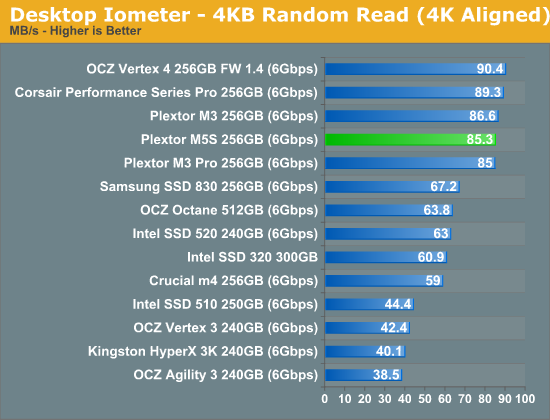
Random read and write performance has not changed at all from previous generation. This was expected because Plextor was not claiming increased random read/write performance, and the performance figures from Plextor are almost identical; The 256GB M3 Pro has 75K IOPS random read and 68K IOPS random write. The respective figures for the 256GB M5S are 73K IOPS read and 70K IOPS write.
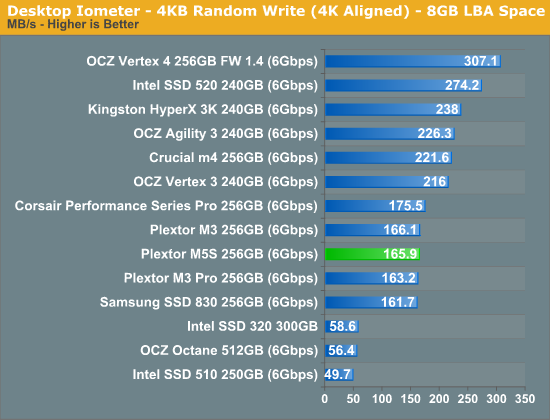
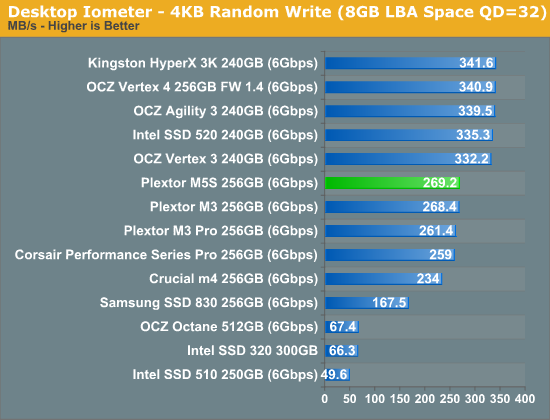
Sequential Read/Write Speed
To measure sequential performance we ran a one minute long 128KB sequential test over the entire span of the drive at a queue depth of 1. The results reported are in average MB/s over the entire test length.
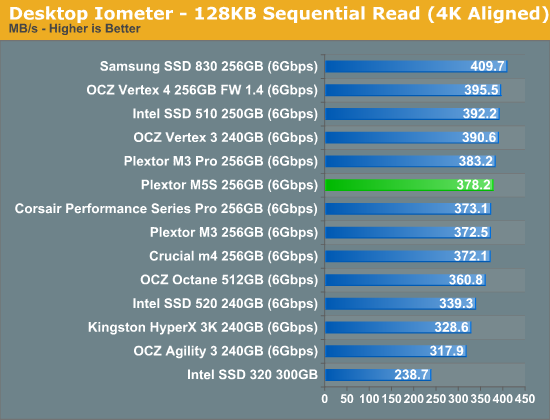
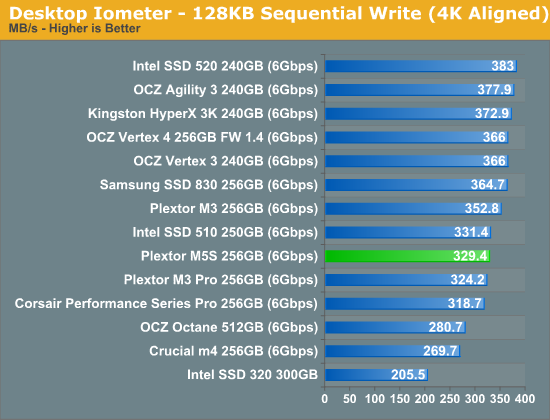
Sequential read and write performance has not changed dramatically either. Sequential read performance is right in-between the M3 and M3 Pro while sequential write performance is similar to the M3 Pro. As we discovered in our M3 Pro review, the standard M3 actually performed better in sequential write test with compressible data, although the M3 Pro was much faster when tested with incompressible data.










43 Comments
View All Comments
waldojim42 - Saturday, July 21, 2012 - link
I finally picked up my M3 about 2 weeks ago now, just in time for the M5s to be released. No regrets here. I am using this in my W520 notebook, and the machine loves it. It is disappointing to see how much performance the new drive lost just to make it more marketable.inplainview - Saturday, July 28, 2012 - link
There is no such thing as a pre-order. You either order or you don't order...alan1476 - Saturday, September 1, 2012 - link
Newegg reviews are very bias, only the people with drives that 1. They do not know how install, using ACHI Mode) or they are using the wrong posts, or they actually have a bad drive, you never know with those reviews. Everyone that buys from Newegg is an expert. LOL.